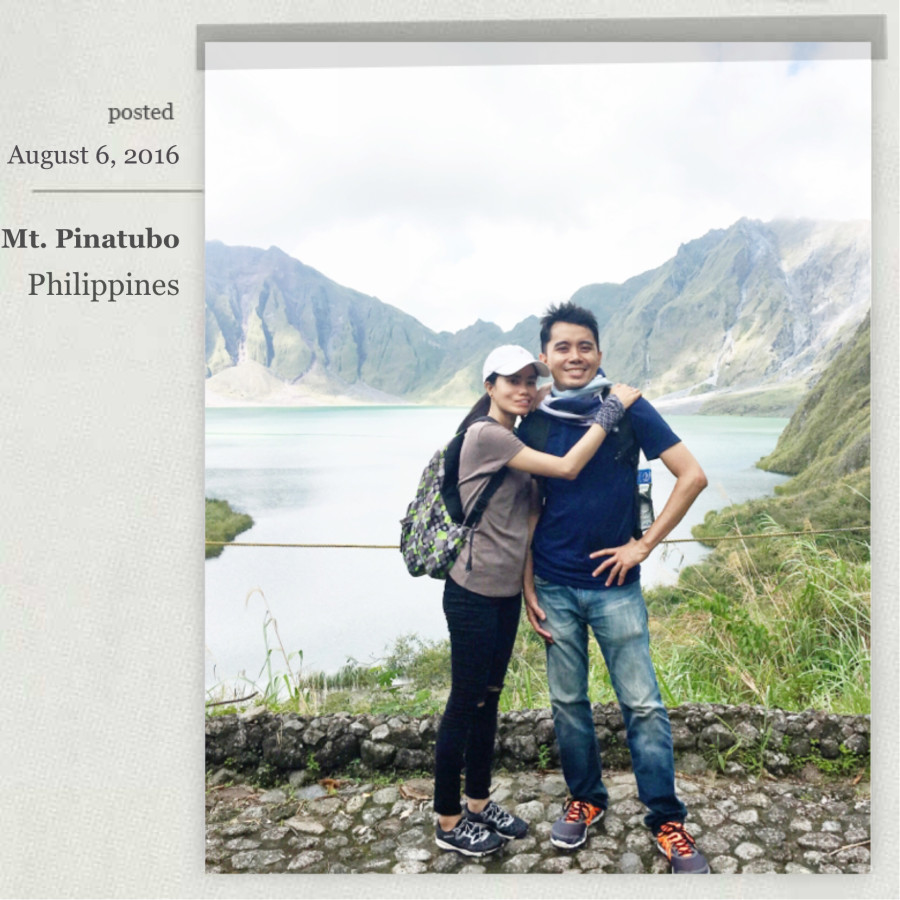Mt. Pinatubo is a trekker’s paradise.
This active volcano is located in the Cabusilan mountains, in the island of Luzon, near the tri-point of the Philippine provinces of Zambales, Tarlac, and Pampanga.
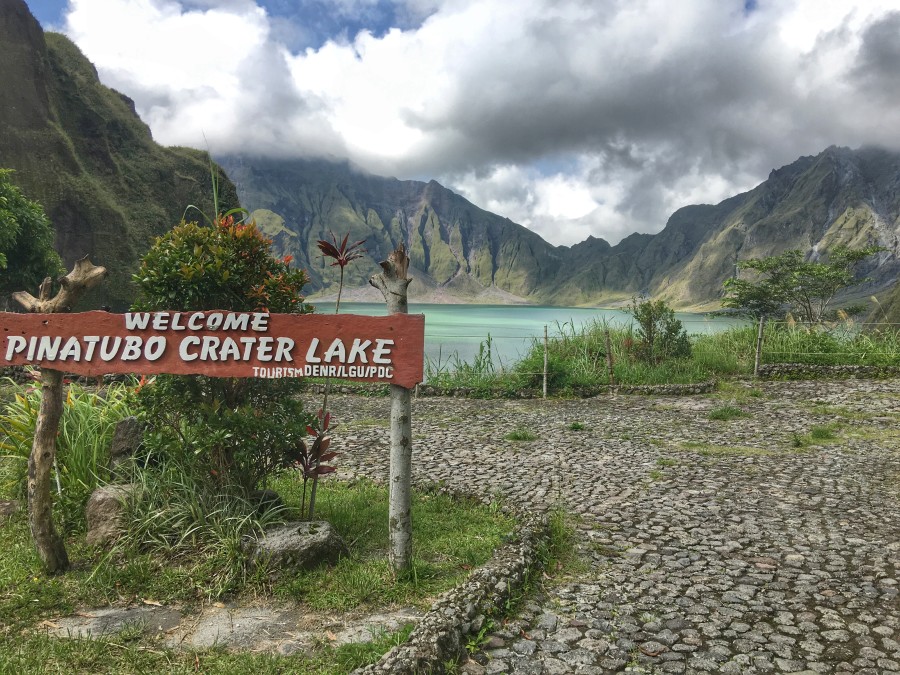
Okay, why the whole mouthful? It only seems fair to write the listed location of this stratovolcano since part of the trail is claimed by the province of Zambales and every visitor is required to pay P700 as entrance fee.
Up until its eruption in 1991, this mountain is under the radar to most trekkers. After it blew off its top and left a trail of destruction and death in its wake, tourists and seasoned hikers alike come to visit this place.
The trail is fairly easy.
Wear an appropriate footwear. One that provides good traction and dries easily should be okay.
You better be in good shape as well. If you can hike 14 kilometers under the heat of the sun, then you are good to go.
The trek can be divided into three parts:
- the 1st part is the 4×4 bumpy ride from Capas, Tarlac passing by the lunarlike landscape of Crow Valley to the jump-off point of the trek;
- the 2nd part is where the majority of the trekking takes place. The trail here is mostly sands, loose rocks, boulders, and the occasional water crossings;
- the 3rd and last leg of the trek is the trickiest part. You’ll be navigating through an endless stream of rocks and slippery stones hidden in a mini-forest that leads right up to the crater.
Was the crater lake worth the trek? You bet!
After learning all the required fees and permits needed for the trek, we decided to just use a tour company. They arrange the 4×4 ride, driver, local guide, permits, and entrance fees.
Travel Factor charges P3,400 per person. This package already includes the van ride from Manila to Tarlac and back.
It is also a nice way to meet new friends on the trails.

The following is a photo essay of the 3-4 hour trek to Mt. Pinatubo crater lake
We started an uneventful 2-hour van ride from Manila and arrived in Capas, Tarlac around 5 in the morning. Shortly after, everybody got busy. Some ate a light breakfast. Others were preoccupied with spraying on sunscreen and gearing up for the trek.
I bought walking sticks from one of the local kids. I find them really useful on the last leg of the trek. Although, they become an encumbrance on some parts of the trail.
Consider also putting on some bug spray. The area near the crater lake is humid, pretty much a nice habitat for small unidentified flying insects.
When all our permits were in order, our travel coordinator divided the whole group into 3. Each was assigned with a 4×4, a driver, and a local guide.
Off-roading in our rusty, i meant trusty 4×4 was the second best thing in this whole trekking adventure.
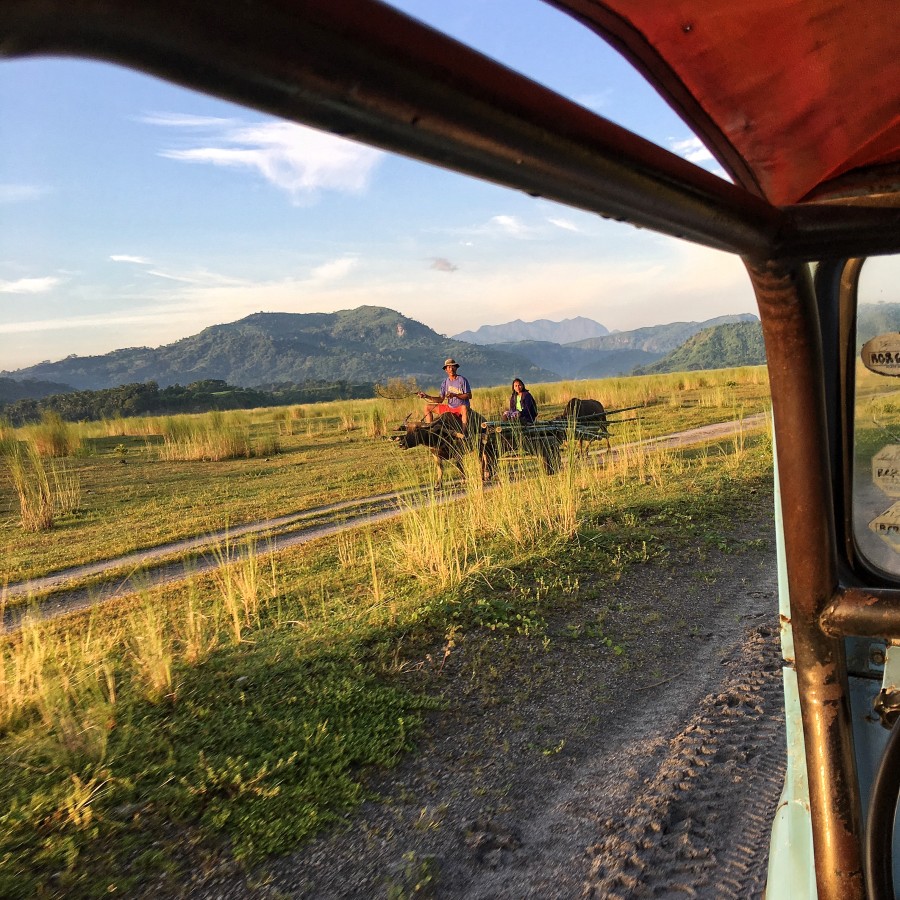
My first picture in Capas. I got lucky I captured this couple with their early morning ride in this picturesque landscape.
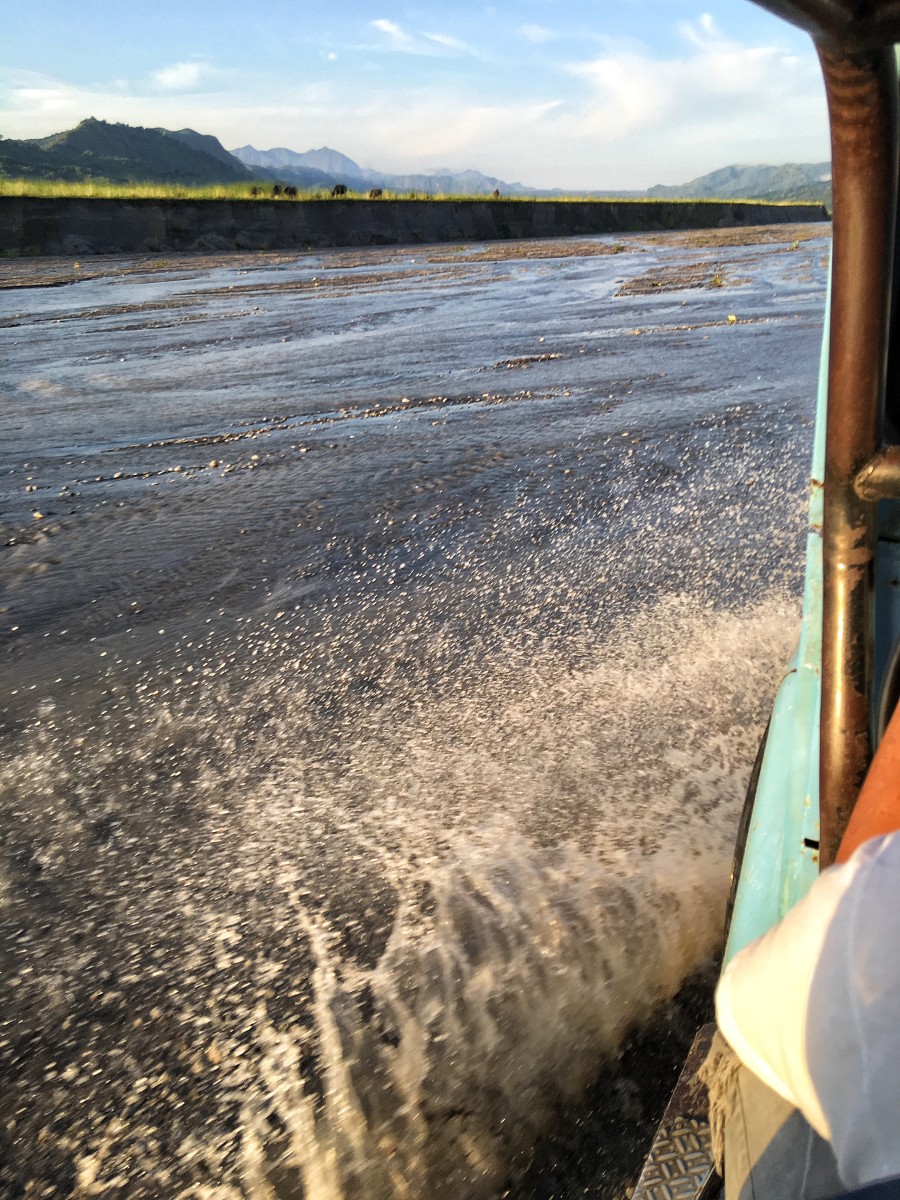
Our driver knows the terrain like the back of his hand. Without his skill, I think we could have easily gotten stuck somewhere in these vast flooded plains.
On our way back, there was a thunderstorm. The roads looked like rivers and there was no dry land to be seen.
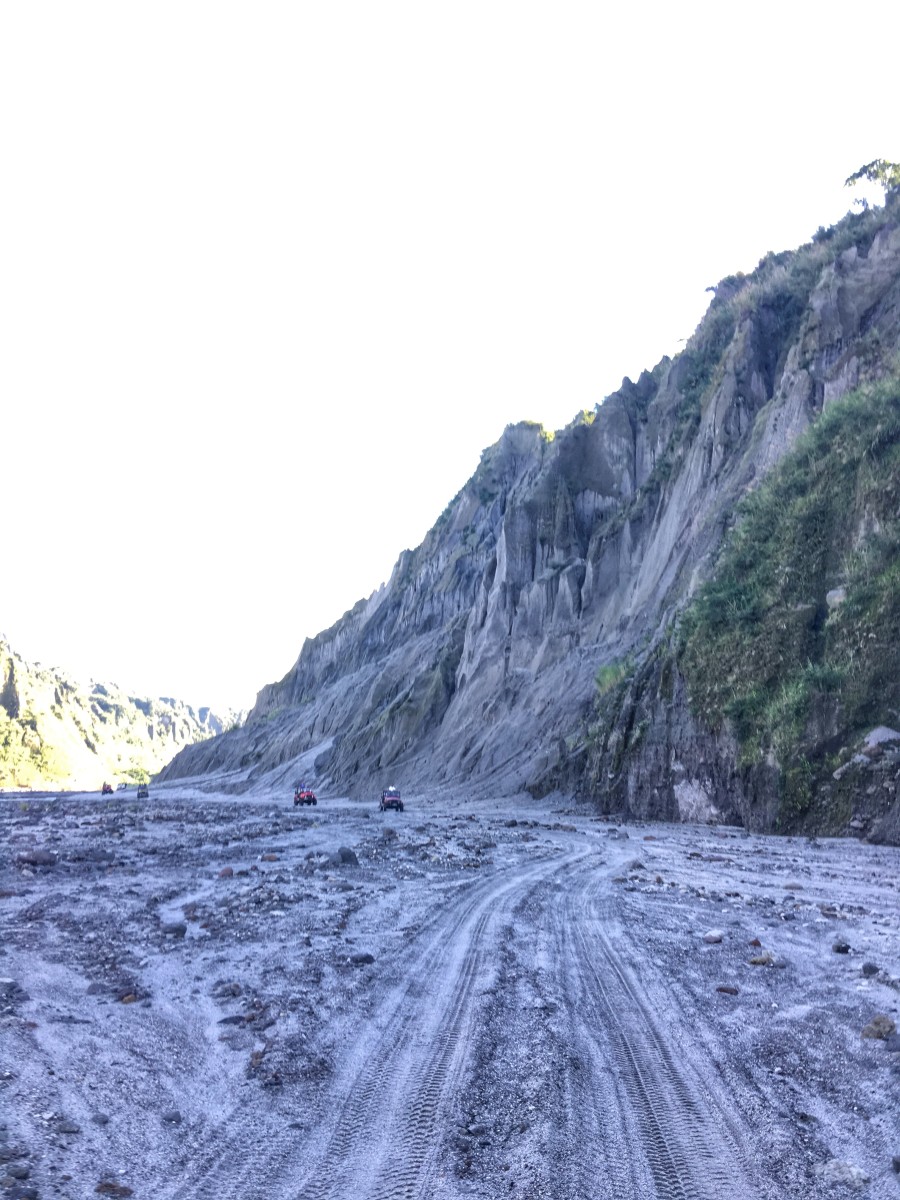
The lunarlike landscape in Crow Valley is surreal. I have landed on the surface of the moon.

After about an hour in our 4×4, there is a mandatory stop. The driver/mechanic did a final check on our vehicle.
Stretch your legs and breathe in the scenery. Wide plains with mountains in the distance in the early morning light. Postcard-perfect!
After a short break, we quickly climb to our 4×4 and on to the super bumpy adventure ride I had with new found friends. Exciting would be an understatement.
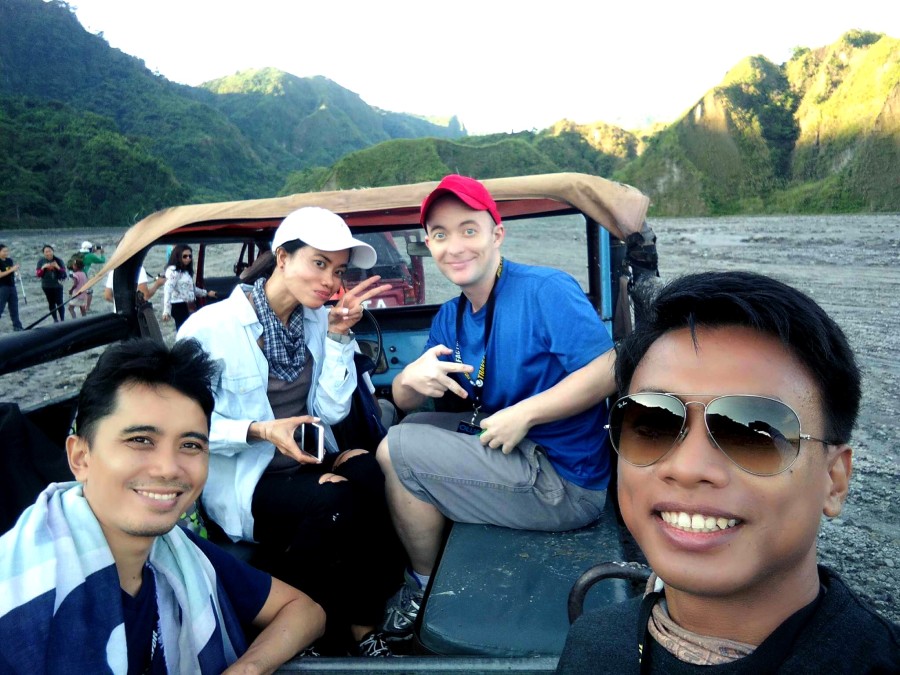


From the mandatory stop, it took us about an hour to reach the jump-off point of the trek.
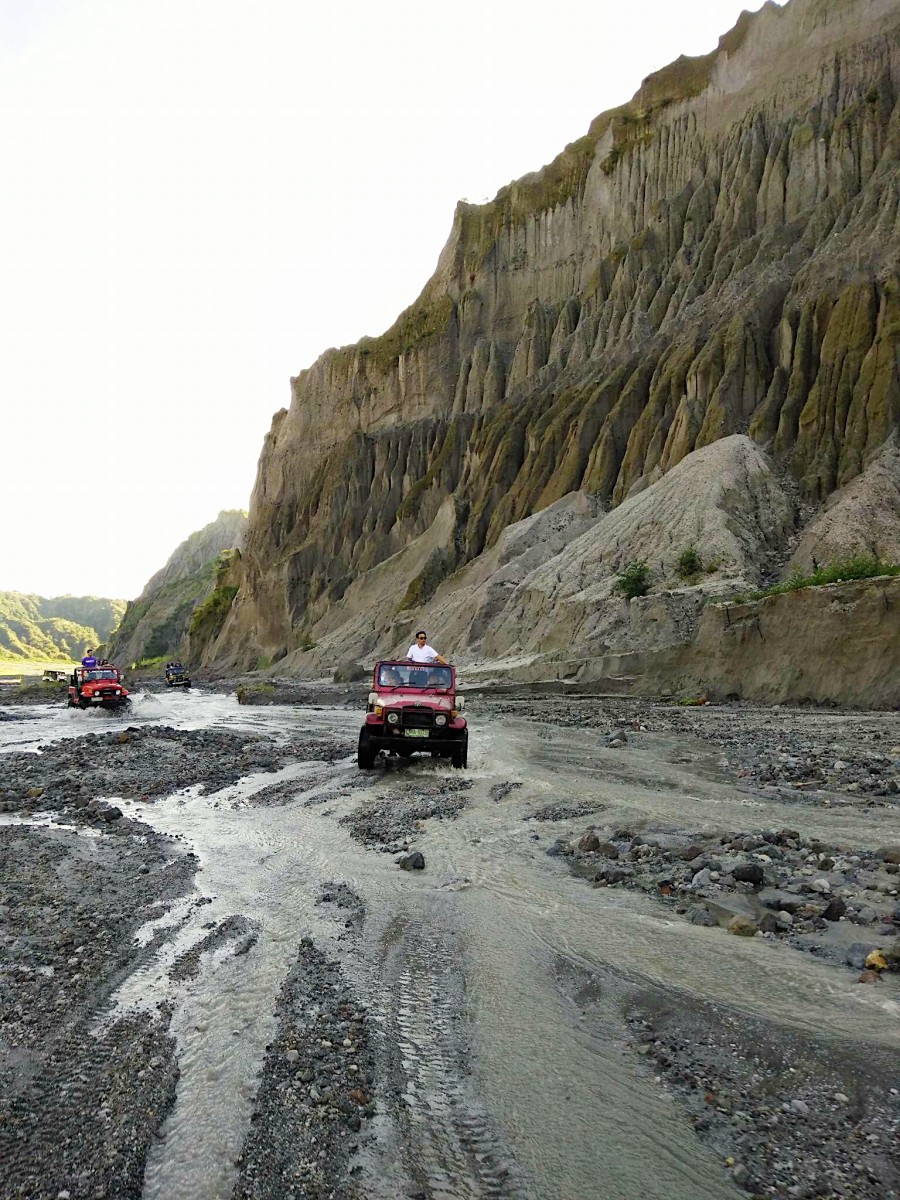
And the trek to the crater began.
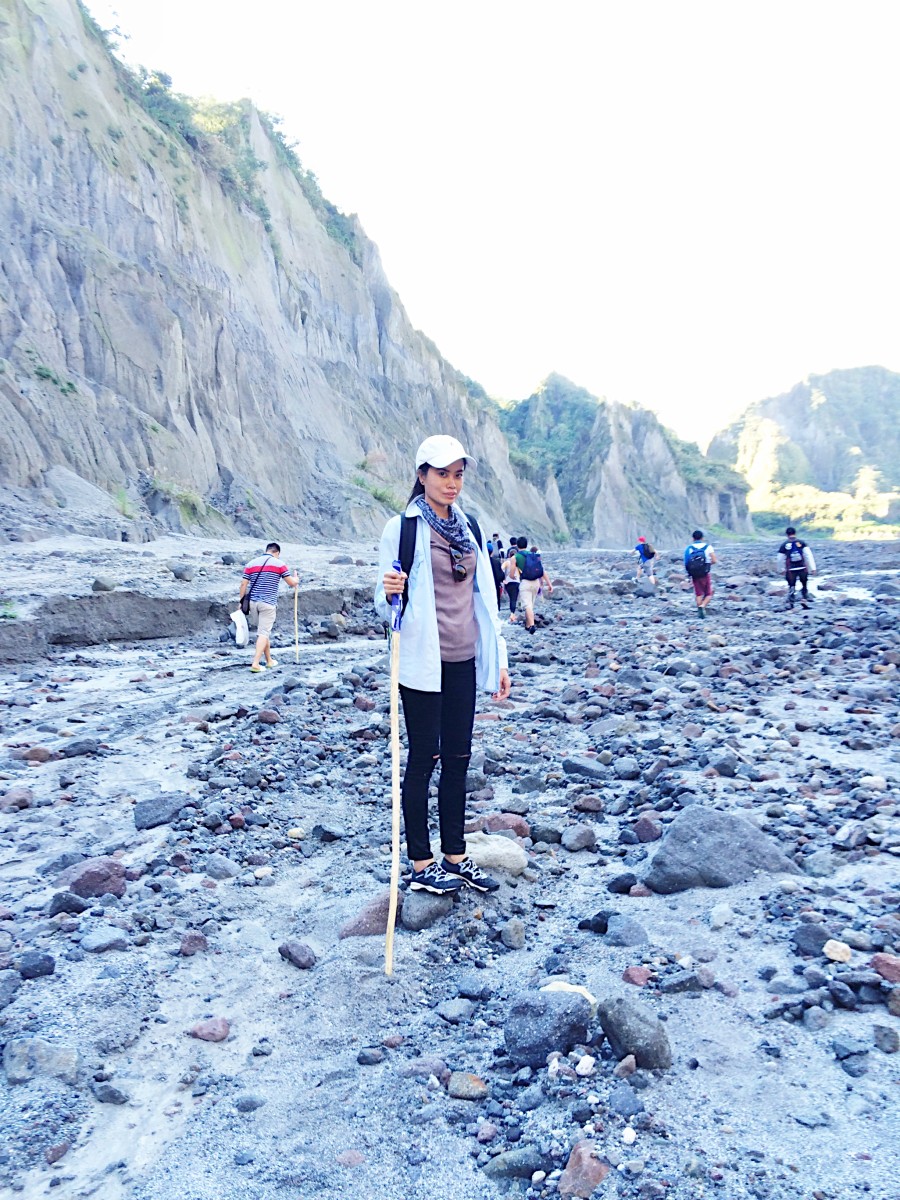
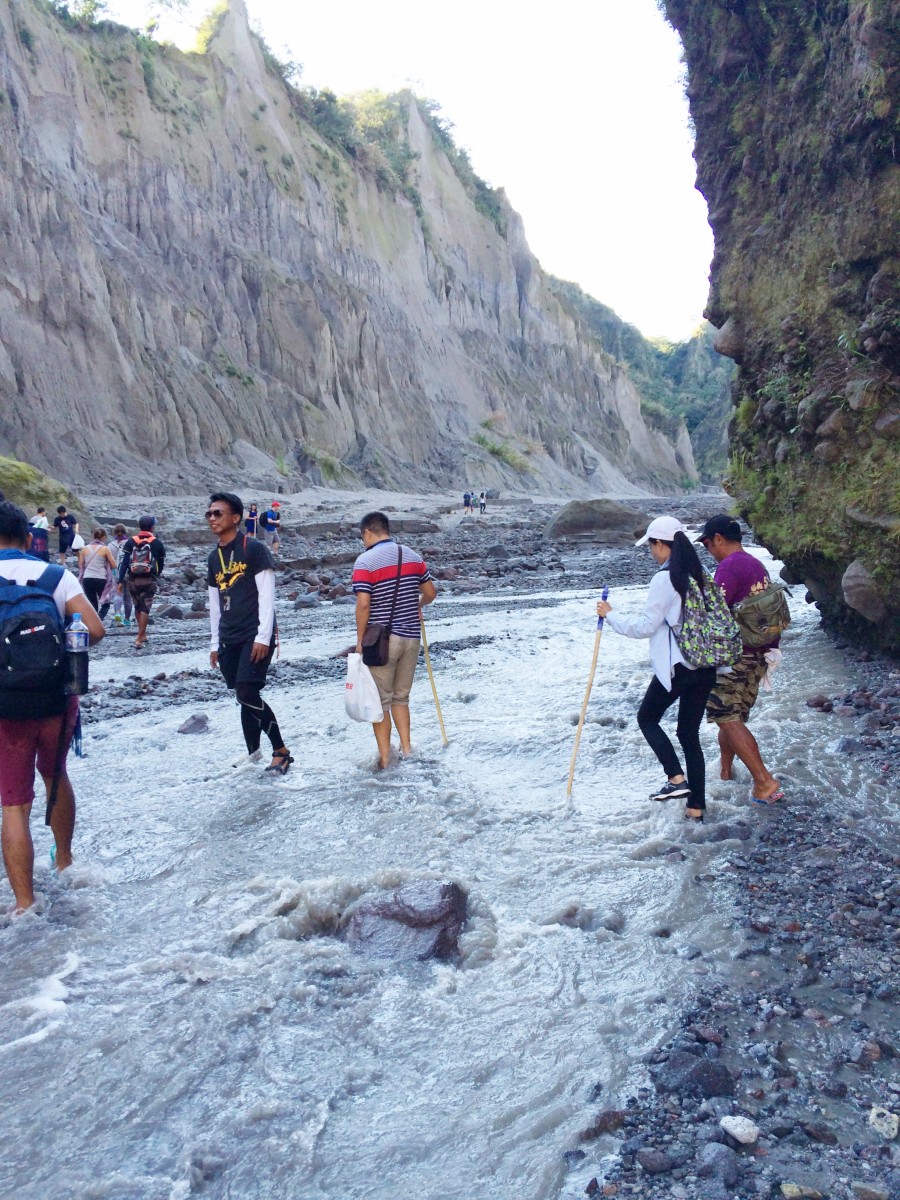
One of the inevitable water crossings along the trail.
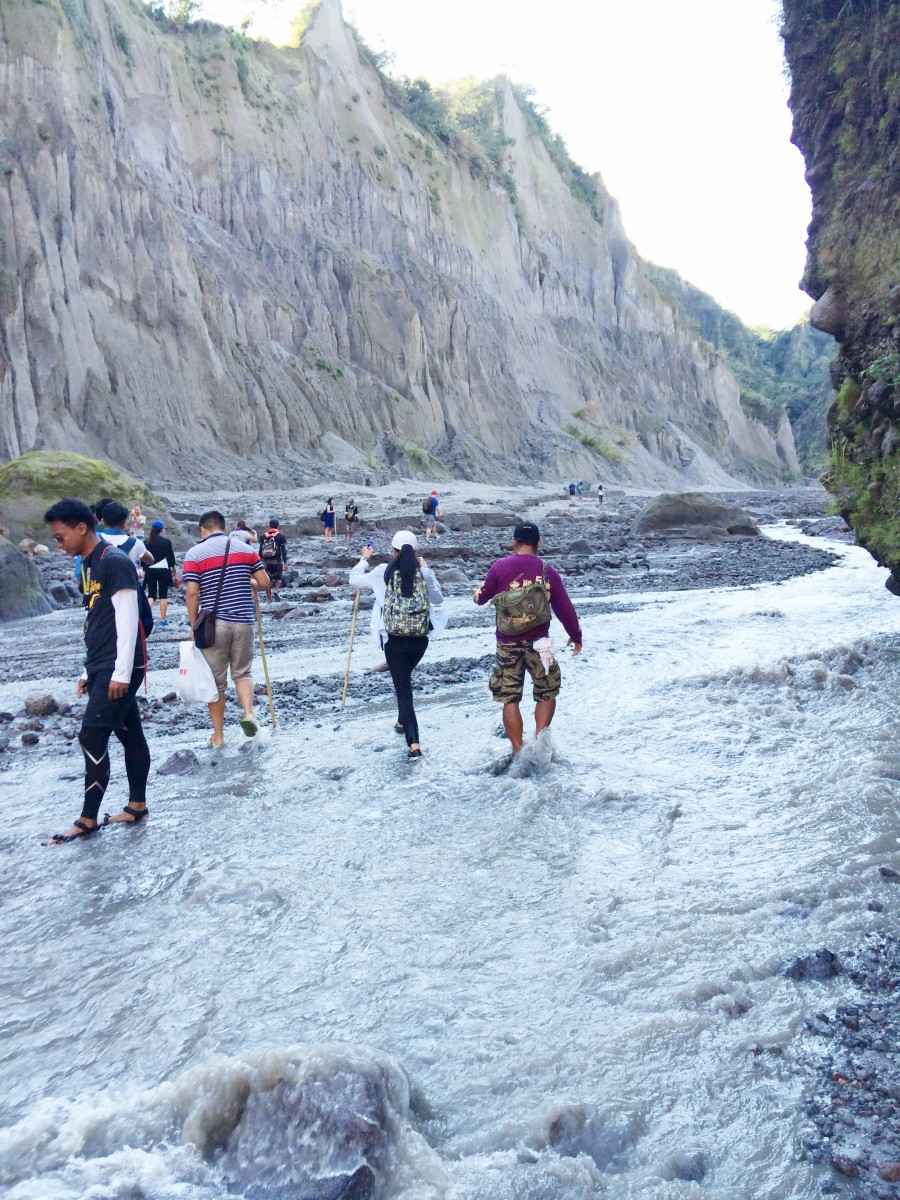
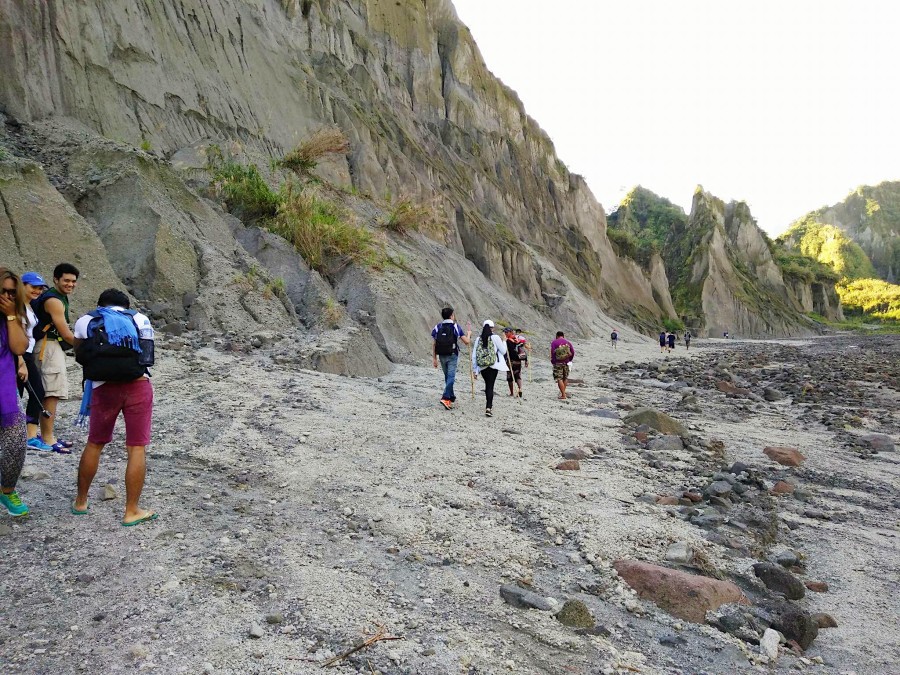

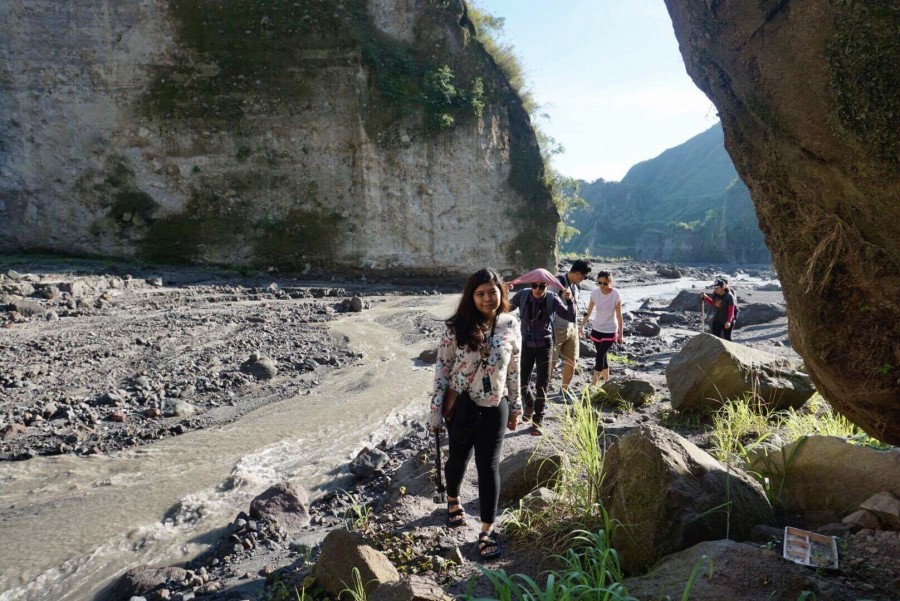
Nearly two hours later, we reached this funny sign.
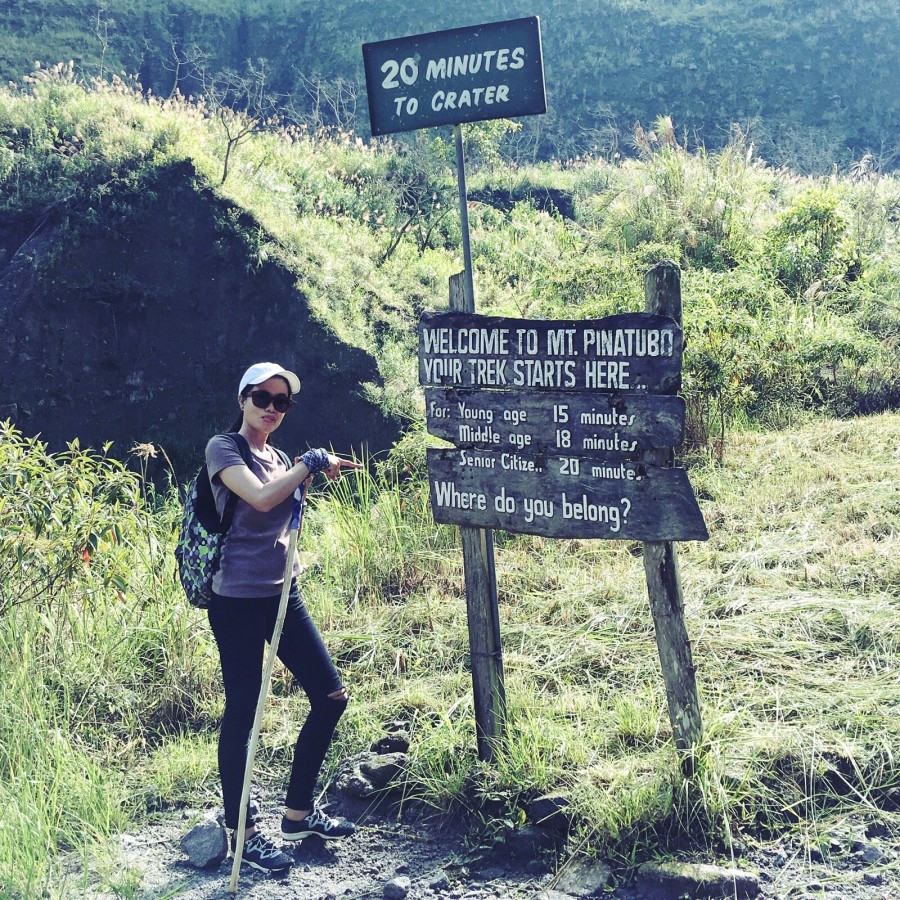
There was no way I could complete it in 30 minutes, let alone 20. They must be kidding. But this worked. Power on!
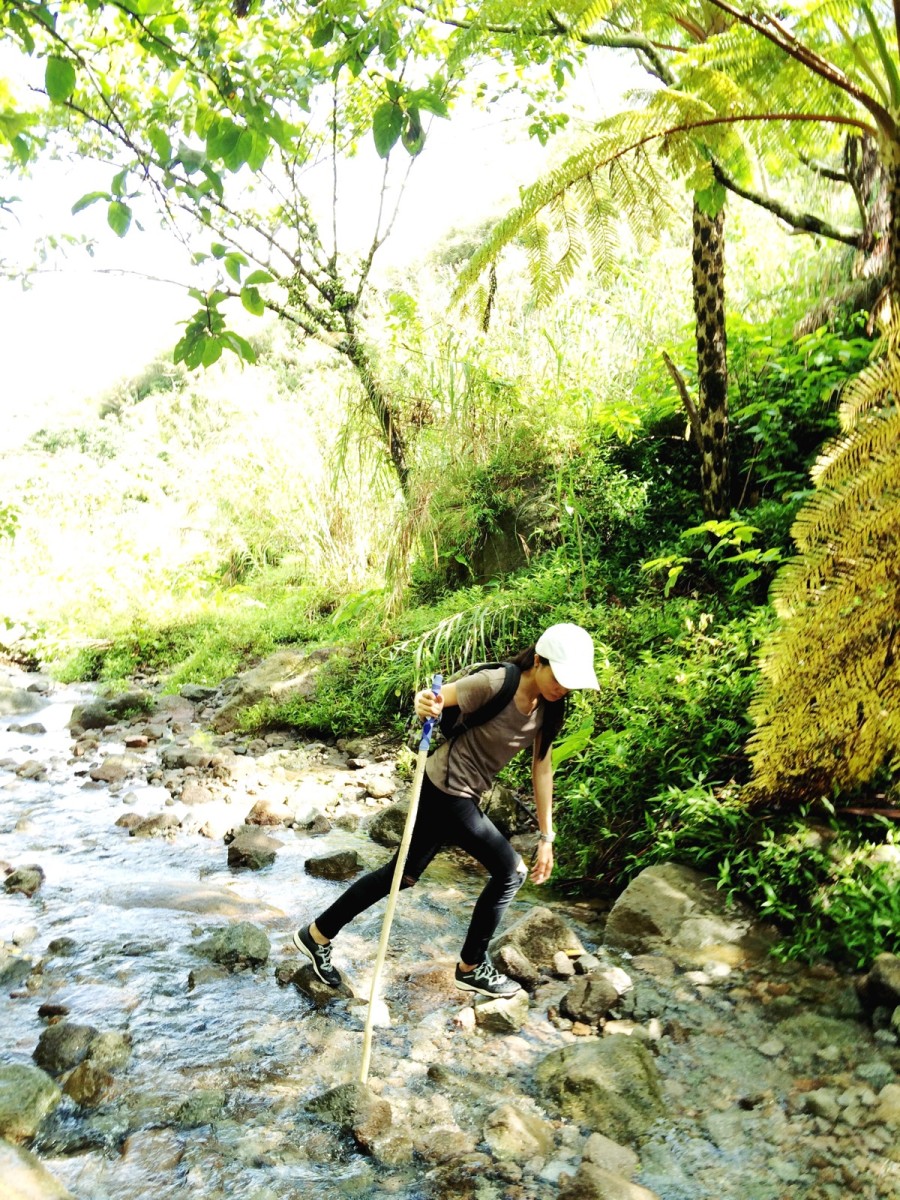
That stick really saved me from slipping off more times than I can count.
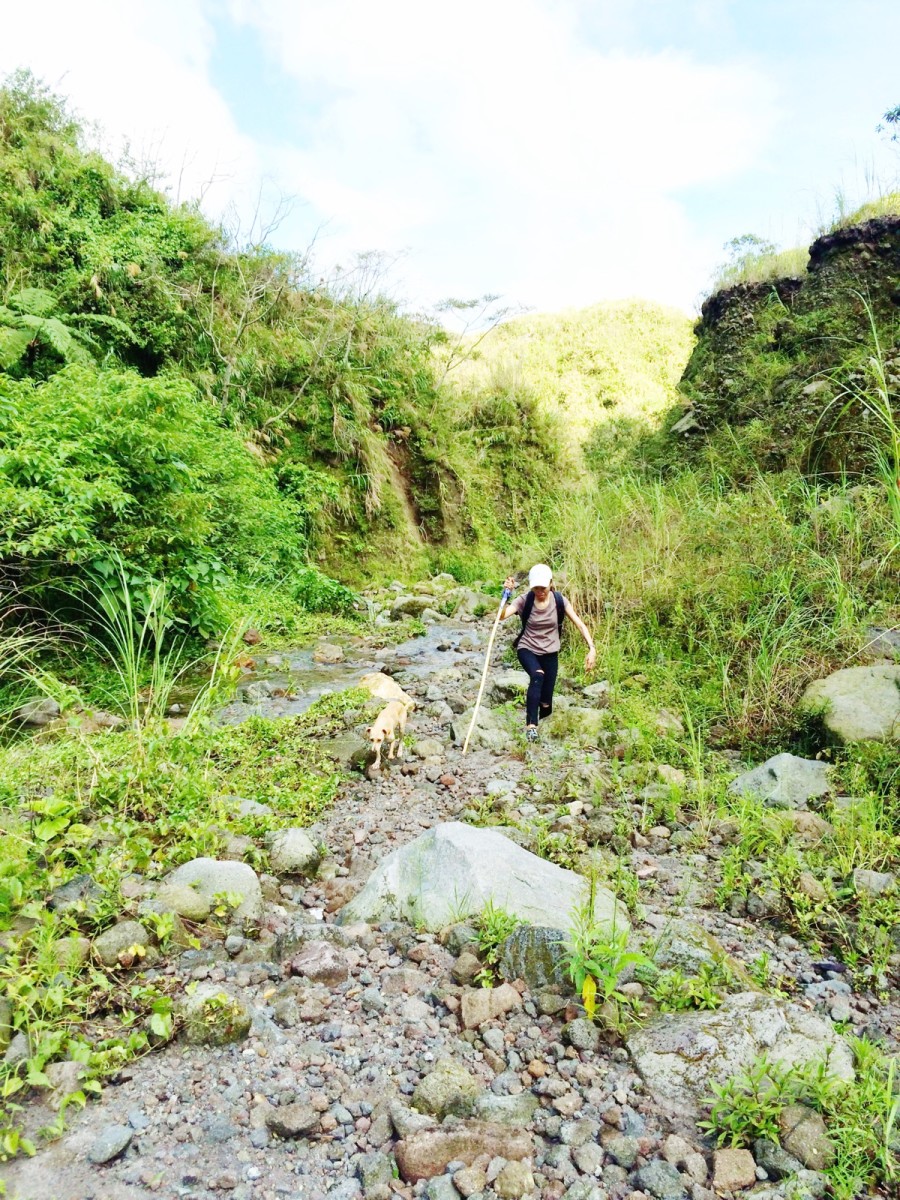
And I got a loyal follower. Apparently, he is also excited to see the crater.
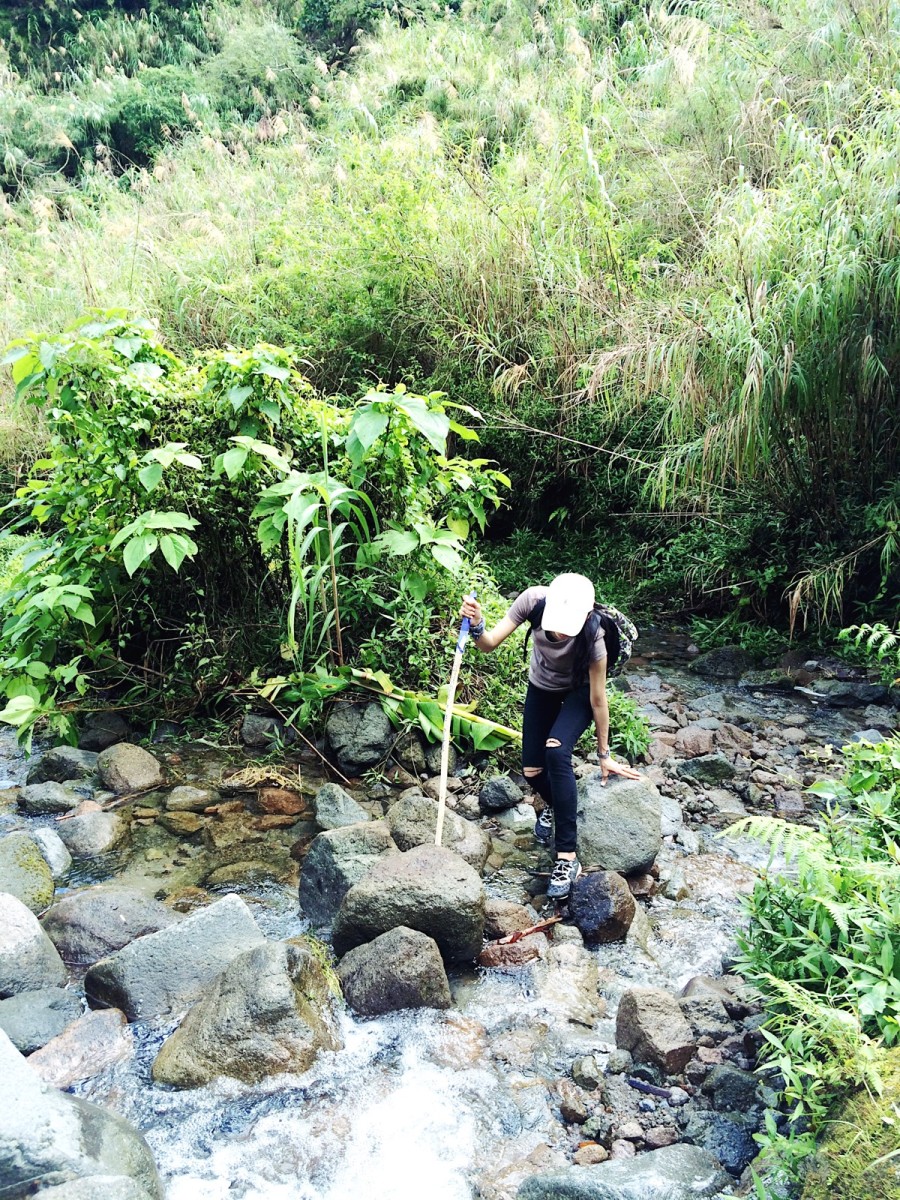
The last leg of the trail is 100% slippery with little insects buzzing around your ears.
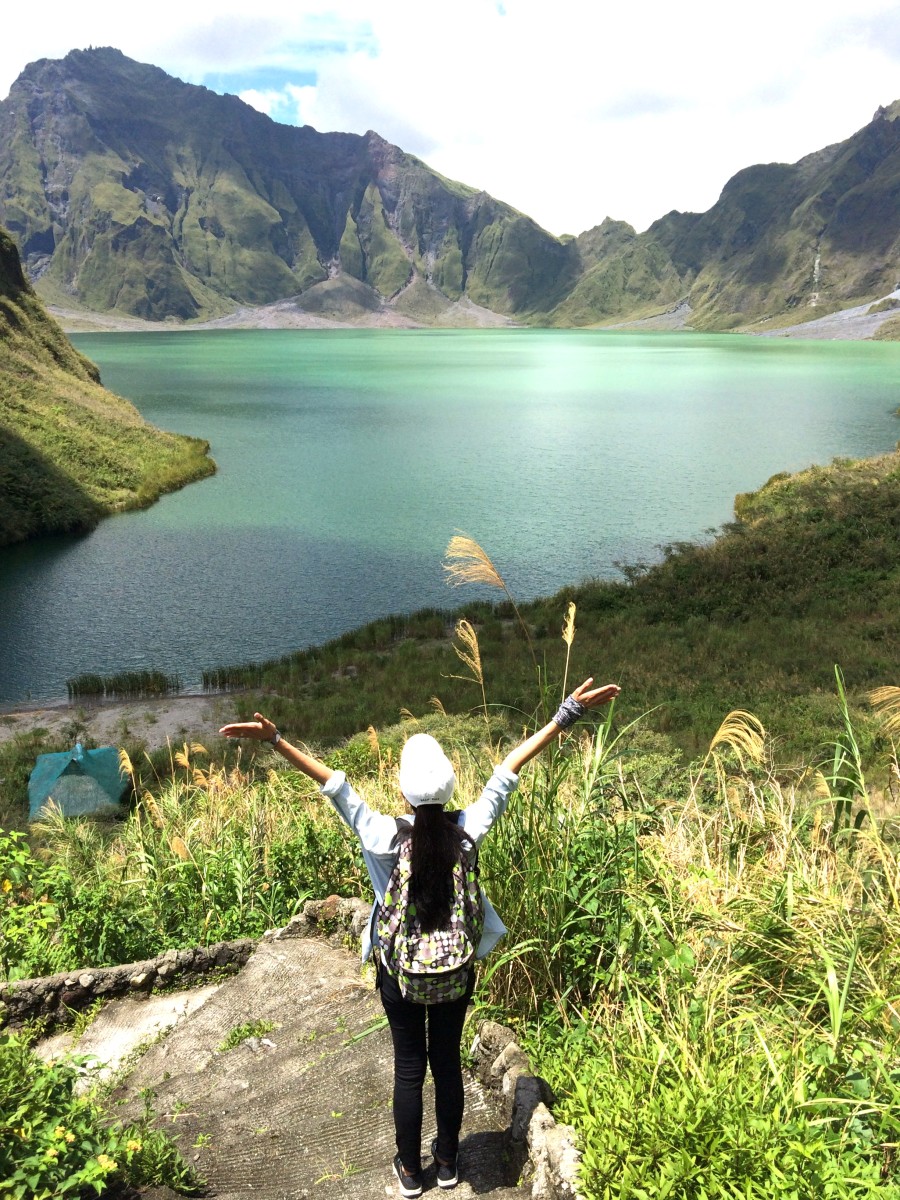
After what seemed like forever, we finally arrived at the crater. wohoo!

Contemplating on the great havoc this beautiful place brought on that catastrophic day. The year was 1991.
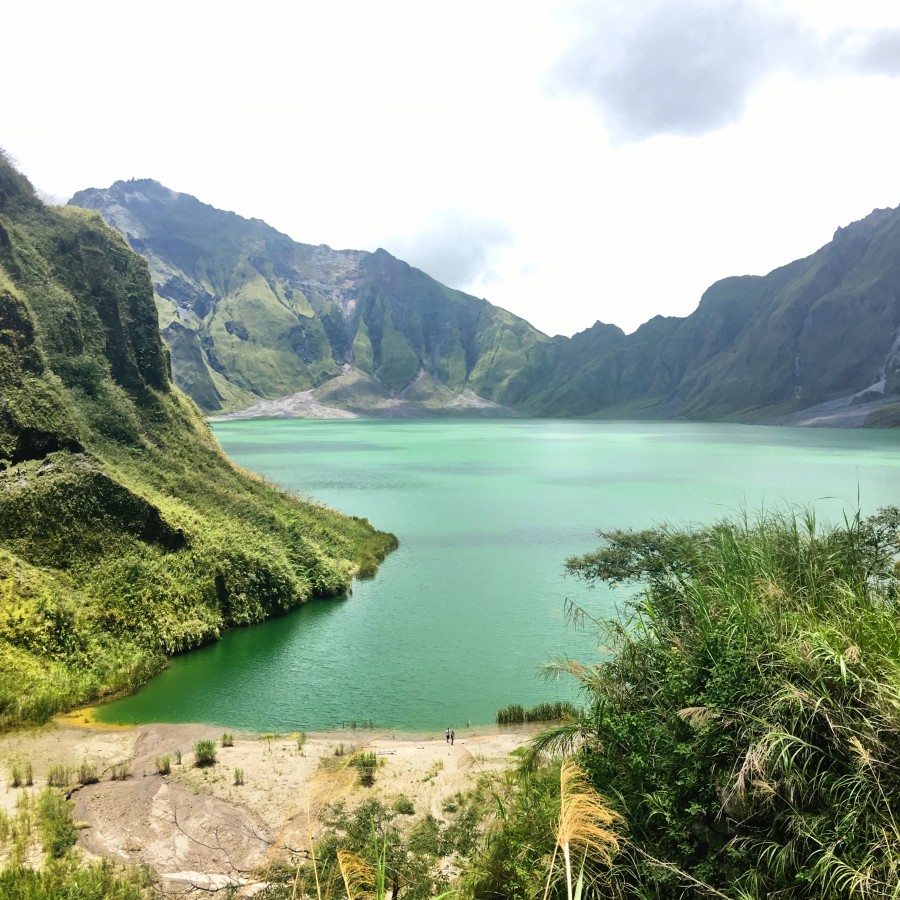
Mt. Pinatubo Crater Lake, Cabusilan Mountains, Luzon, Philippines
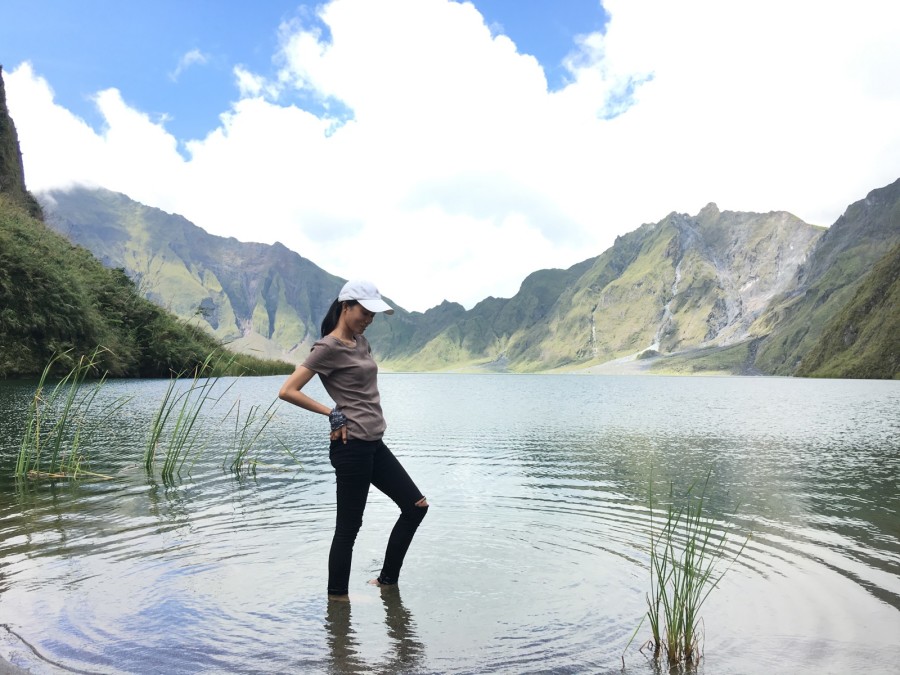
The lake looked so serene, I just had to disturb the water.
At present, swimming at the crater lake is strictly prohibited.
This is probably due to its undetermined depth, strong current at the center of the lake, which could suck you in I suppose, and its high sulphur content. On the other side of the lake, some parts are boiling hot. You surely don’t want to wander in there.
Prior to the accident a couple or more years ago, boating here is offered to tourists. Now, there are sterner rules. No boating and definitely no swimming.
Oh well, let’s just bring out our lunch pack. We had a wonderful picnic here. Hikers arrived and left, after taking a hundred and one souvenir shots no doubt, just like we did.
On our way back, we completed the whole trek in less than 2 hours. How? The sky suddenly turned gloomy. Thunder was grumbling somewhere in the distance.
In fact, it started drizzling halfway on the trail. Our local guide kept urging us to quicken our steps. The water level could abruptly rise and we wouldn’t be able to cross those streams. And pretty sure I wouldn’t want to be stuck in a gorge in that deluge.
By the time we arrived at the jump-off point where our 4×4 ride was waiting, we were totally drenched.
The ride back was a super adventure! Wind, strong rain, and the occasional mud splashes, ha ha bring it on!
Another adventure unlocked. Mt. Pinatubo, you truly are a beautiful disaster.
Tip:
If you do decide to trek during the rainy season, better start early in the day. There’s a high probability of rain late in the afternoon. The area has a high risk for flash flooding.
